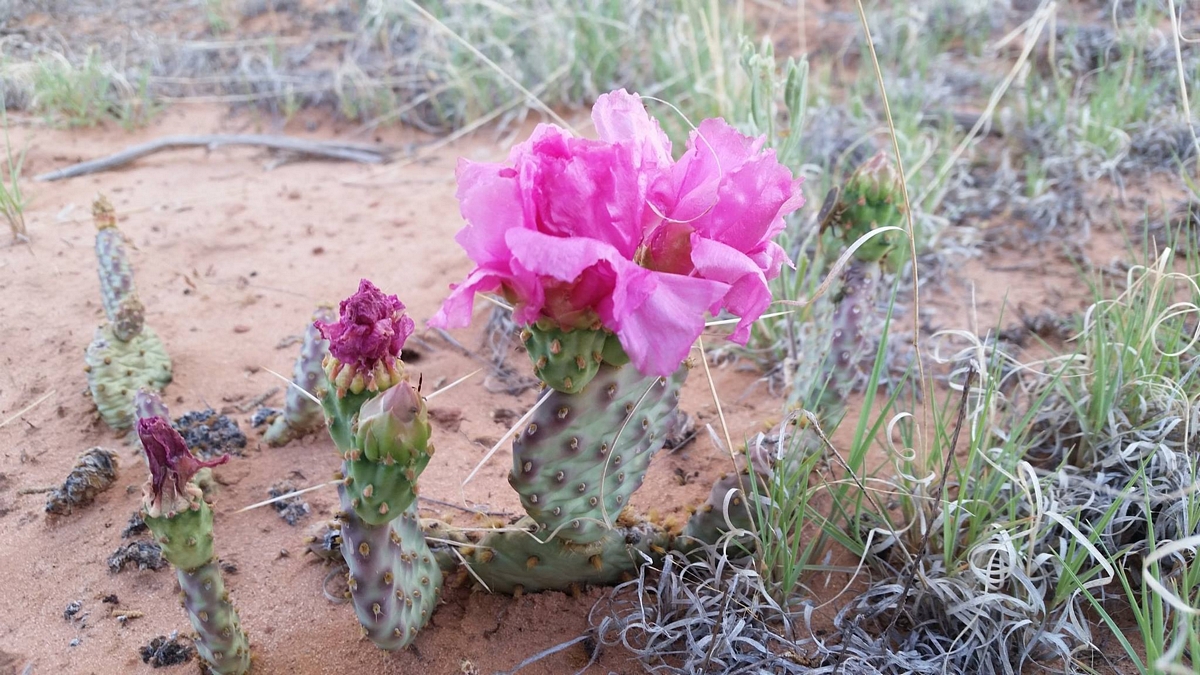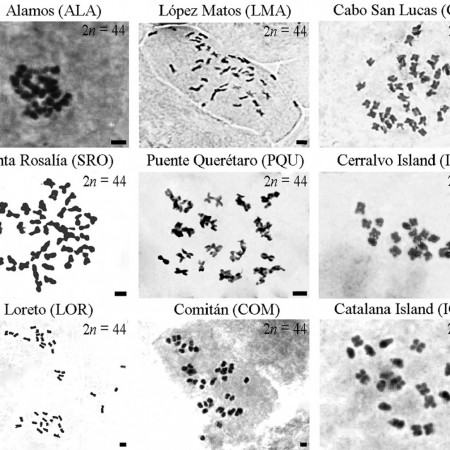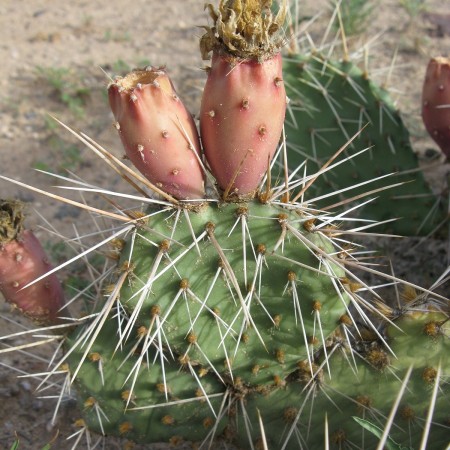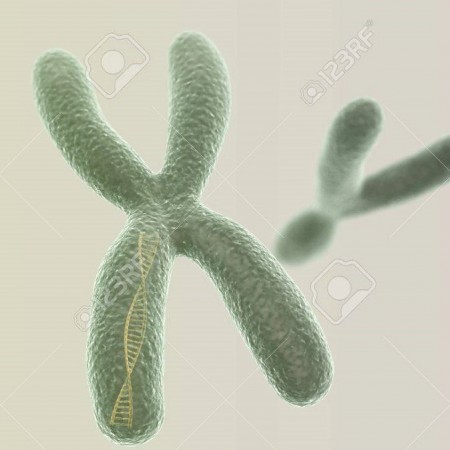(Photograph = Opuntia pinkavae, octoploid, Chris Ginkle)
Introduction
Polyploidy refers to the doubling (or more) of chromosome numbers in plants, animals, and other organisms. For instance, cacti have a minimum of 22 chromosomes in adults. But this has doubled in a variety of species, which now have 44 chromosomes (tetraploid). In fact, in some species, the minimum number has tripled (66 chromosomes) or even quadrupled (88 chromosomes). Polyploidization is thought to be an important driver of evolution.
The Details
One immediate and important consequence of polyploidization is that the polyploid plants cannot breed with their progenitors. The differing chromosome numbers generally present strong barriers to fertilization. Thus, the polyploidization can create a new species. Where there was one there are two, and they go their separate ways.
Twice the number of chromosomes means twice the number of genes. For instance, there will be twice as many genes for flower formation, opening, and color, etc. Maybe flowers will be brighter or larger. The gene duplications have consequences in many areas including plant shape and appearance. Spines may be sturdier, and plants may be be more robust. The extra genes may allow plants to move into new environments that their parent species could not successfully colonize.
The doubling of chromosomes generally happens in one of two ways. A plant may somehow create two copies of its own chromosomes. Or, a plant may obtain a the second set from another species. In the second example, the progeny are likely to be very different from either parent. Polyploidization occurs rarely, but it occurs often enough over evolutionary time that many cactus species are polyploid including various members of the:
- Opuntioideae,
- Browningieae,
- Pachycereeae,
- Notocacteae, and
- Cereeae.
Additional Reading: Evidence of Polyploidy in Haageocereus
Additional Reading: Polyploidy and Diversification in Pachycereus





